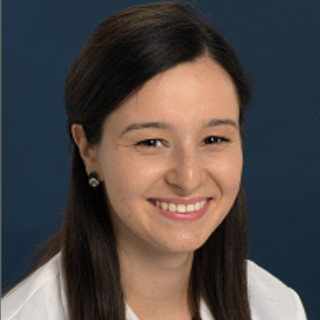The method I used to organize my world changed after July 1, 2020.
One day can be huge in the world of obstetrics. It can be the difference between keeping a baby on the inside or delivering one to a patient with preeclampsia, showing signs of severe features at 33 weeks and six days. It may be the difference between being able to do a suction dilation and evacuation for a miscarriage versus having a mom go through an induction and vaginal delivery. One day is what separated me from being a doctor on paper and introducing myself as Dr. Ackert, one of the ob/gyn residents who will be helping take care of my patients.
Previously, in medical school, I saw days as good or bad. I would remark to my roommates that I had a good day because my attending let me place a laparoscopic port in a case, or I had a bad day because I had been stuck in the OR, missed lunch, and was hangry.
That all changed on July 1. We started off our day with a lecture from our associate program director about fetal heart tracings. Monitoring heart tracings is one of the most important parts of taking good care of a patient in Labor and Delivery. It is the first thing we learn all the way back in medical school, and one of the hardest things to master. Interpreting a tracing can be subjective and the decision to allow someone to proceed through labor and try for a vaginal delivery versus a cesarean delivery is not one we take lightly. Mothers-to-be expect a healthy baby at the end of their labor course, and we do everything in our power to give them that.
The way in which we organize our world is by these fetal heart tracings, and they are broken up into three categories from best to worst: 1, 2, and 3. Most strips are Category 1: the baby looks good and it is safe to proceed through labor. The worst is Category 3, and if one encounters a Category 3 tracing they should already be en route to the OR for an emergency C-section. Category 2 is everything else in between. It encompasses everything from tachycardia to decelerations. Things go down, but come back up. The baby is able to recover. We proceed cautiously.
I entered the floor on July 1 and immediately was overwhelmed. There were so many patients in labor. There was no limit to the pages I received on my cell phone, in addition to my emergency intern phone, which seemed like it was ringing nonstop. Nearly every bed up in postpartum was full, and we only had one labor bed left with multiple patients in triage. A decision was made to go on diversion, meaning our patients would be sent to our other smaller labor and delivery unit in the next town over. I sat at a computer attempting to navigate the EMR thinking to myself, I’ll never be able to do this. I finished the day with the support of my senior residents who literally held my hand as I did my first transvaginal ultrasound, performed cervical checks, and did my very first C-section. I went home that night feeling like a complete failure although every other doctor, nurse, and scrub tech assured me I did a great job. I decided it was a Category 2 day. I had highs and lows, and I was able to recover and come back up to baseline with the help of my new colleagues.
The next few days were great. I delivered several babies and walked a patient who had previously been a victim of sexual violence through a speculum exam. She cried, hugging me tight, and told me that I was the first doctor to respect her prior trauma and perform a comfortable exam on her. Category 1.
There was a Category 3 day the next week. I attempted to sign out all the patients on the board and postpartum floor by myself, and I had no idea what some of these complicated abbreviations and algorithms were. Labetalol 20/40/80/80 to hydralazine 5/10? What do all those numbers even mean anyway? I had been a resident for five days. I knew they were blood pressure medications approved for preeclampsia. When a senior resident barked that I needed to keep an eye on every single pressure of the preeclamptic patients in front of every attending, nurse, resident, and student, I turned away from the room as I continued my presentation and tried not to cry. I knew he was right. I did need to keep a close eye on the pressures. But didn’t he know that I just delivered two babies before sign-out, seen a seemingly never-ending stream of patients come through triage, and there were 12 patients with preeclampsia in postpartum? I felt broken. My chief resident pulled me out of the room and asked me the last time I had eaten and used the bathroom, then ordered dinner to my house, then told me that I needed to be home in 25 minutes to retrieve it and be in bed by 8 p.m. The senior resident came into the call room where we were, and he apologized for being harsh. He then told me I was doing a good job. He wanted me to be a good resident, and I wanted to be a good resident; I didn’t want to let my seniors down.
The weeks continued to fly by, and I became more comfortable with the unruliness of labor and delivery. I was unphased by the patients who came in screaming, completely dilated, and blew out a baby. I learned how to throw in a fetal scalp electrode while a mama was on her hands and knees with five labor nurses holding her epiduralized numb body up because the baby’s heart rate was in the 50s. I memorized the phone numbers for our anesthesia team and scrub tech, and I could dial them while sprinting down the hallway for a stat C-section. I would go from delivering a baby and having parents cry tears of joy thanking me to getting a frantic call from a nurse, sprinting into triage with an ultrasound for a patient who had stopped feeling her baby move, scanned, and saw no heartbeat.
I started to have fewer Category 2 days. The variable decelerations of, “I’m really doing this!” to “I’ll never be able to do what my chief residents do,” went from persistent to intermittent.
And then, somewhere between night float and my first month of residency clinic, the majority of my days became Category 1 — even the hard ones. I delivered my 100th baby of residency. I mourned Justice Ruth Bader Ginsberg’s death, whose quote, “I would like to be remembered as someone who used whatever talent she had to do her work to the very best of her ability,” is above my desk. I performed my first laparoscopic surgery. My medical Spanish improved. I saw more pathology in the ob/gyn world than I ever thought possible. I giggled with our nurses. I used my voice to ask questions to our maternal fetal medicine and other subspecialty attendings, even when I was embarrassed that I didn’t know something because I knew it would make me a better doctor. I became confident as a young surgeon-in-training.
These days, when I deem the day I am having as Category 2 or even Category 3, I remind myself that I am always able to recover my heart tracing back down to a Category 1. And whenever I look back at some of the hardest days I’ve had in residency, they don’t seem like days that have broken me — although they may feel so at the time — but rather days that have made me into a better doctor.
How have your views on practicing medicine changed over time? Discuss in the comments below.
Kathleen Ackert is a resident physician in Obstetrics & Gynecology at St. Luke’s University Health Network. When she is not in the hospital, she can be found in coffee shops writing narrative medicine pieces or eating in restaurants that offer low-lit dining experiences. She enjoys crossfit, reading, and instagramming pictures of fancy lattes.







